In this article, we will learn about power gain and voltage gain in dB. The letter dB stands for decibel. Bel or Decibel are the units of measurement that compare the intensity of acoustic or electrical signals, named for American inventor Alexander Graham Bell (1847 to 1922).
Measurements are typically done in tenths of a bel, or decibels. The logarithm of the ratio of the sound or electrical signal to a standard provides the decibel measurement.
Why is dB used as a unit of gain measurement?
The power gain of an amplifier is the ratio of output power to input power. For example, if the output power is 1000000 watts and the input power is 100 watts, then the power gain Ap is 1000000/100= 10000.
This number 10000 is a huge number and if we use this large number, the calculation becomes very complex. The calculations become easy if this number is small. Now, we will convert this power gain into the decibel to see how this number reduces to a smaller value.
The power gain in decibels is;
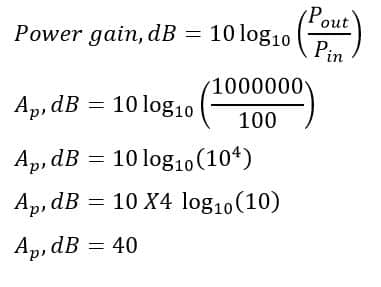
Thus, the power gain is 10000, which is equal to 40 dB. The power gain in dB is a smaller number and it is easy to use this number in solving numerical problems, That is why dB is the preferred unit for power gain, voltage gain, and current gain for amplifiers and attenuators.
Now we will discuss the power gain, voltage gain, and current gain in dB.
Power Gain in dB
The ratio of output power to input power is the Power gain of the amplifier.
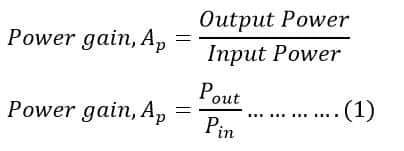
We can calculate the Power gain in Bel by taking the logarithmic of the ratio of output power and input power.


We can also express the power gain in dB as;

Calculation of Power Gain in dB
Let us take an example to calculate the power gain in dB.
The input power to an amplifier is 100 watts. It amplifies the input power to 10000 watts. Then, the power gain in dB is ;
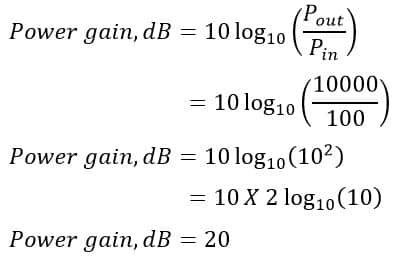
The gain/loss in decibels is given in the below table.
| Loss/Gain as a ratio( Pout/Pin) | Loss/gain in decibels= 10 log(Pout/Pin) |
| 10000 | 40 dB |
| 1000 | 30 dB |
| 100 | 20 dB |
| 10 | 10 dB |
| 1 | 0 dB ( No loss/No Gain) |
| 0.1 | -10 dB |
| 0.01 | -20 dB |
| 0.001 | -30 dB |
| 0.0001 | -40 dB |
Calculation of Power Gain in dB for Cascade Amplifier
The cascaded amplifier increases the overall power gain, voltage gain, and current gain.

The total power gain of the above-shown cascade amplifier is,
A= 100 X 100
= 10000
Power gain of the cascade amplifier in dB is;
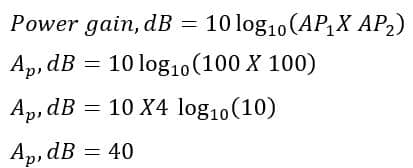
The power gain of the first stage amplifier in dB,
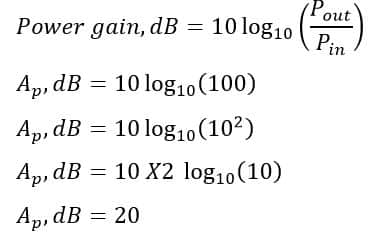
Power gain of first stage amplifier in dB,
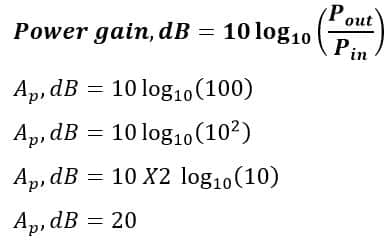
The total power gain of the cascade amplifier in dB is;

Thus, we can calculate the power gain of the cascade amplifier in dB by adding the power gain(dB) of the individual amplifier.
Voltage Gain in dB
The ratio of output voltage to the input voltage is the voltage gain of the amplifier.
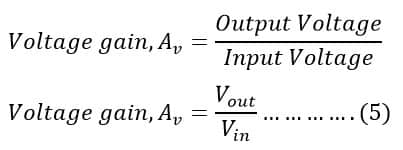
We can calculate the voltage gain in Bel by taking the logarithmic of the ratio of output voltage and input voltage.
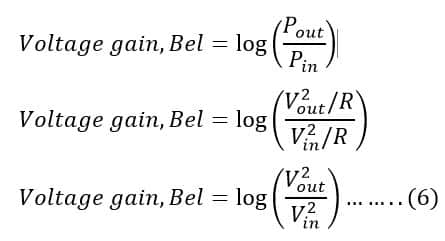
Now, we can express the power gain in decibels by taking a log scale of 10.
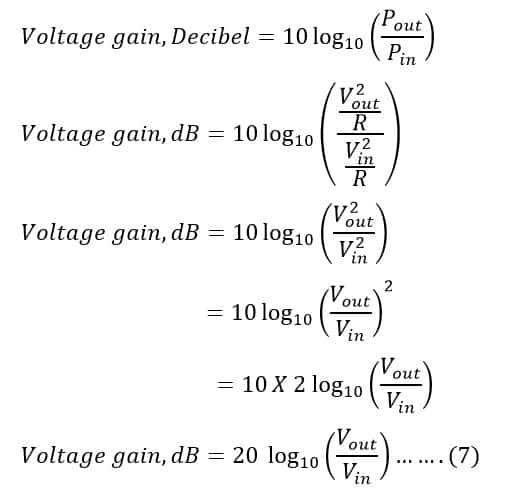
We can also express the voltage gain in dB as;

Calculation of Voltage Gain in dB
The input voltage to an amplifier is 1-volt watts. It amplifies the input voltage to 10 volts. Then, the voltage gain in dB is ;
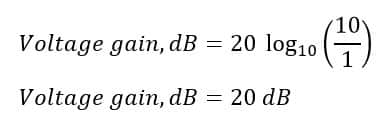
The gain/loss in decibels is given in the below table.
| Loss/Gain as a ratio( Vout/Vin) | Loss/gain in decibels= 20 log(Vout/Vin) |
| 10000 | 80 dB |
| 1000 | 60 dB |
| 100 | 40 dB |
| 10 | 20 dB |
| 1 | 0 dB ( No loss/No Gain) |
| 0.1 | -20 dB |
| 0.01 | -40 dB |
| 0.001 | -60 dB |
| 0.0001 | -80 dB |
Current Gain in dB
The ratio of output current to input current is the current gain of the amplifier.
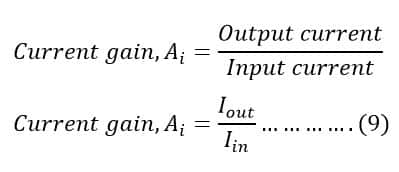
We can calculate the current gain in Bel by taking the logarithmic of the ratio of output current and input current.
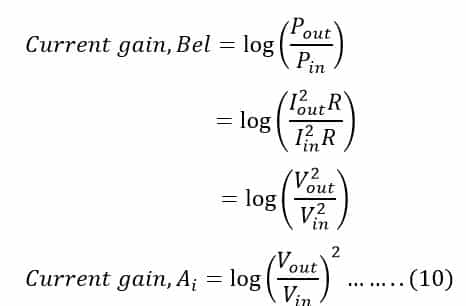
Now, we can express the current gain in decibels by taking a log scale of 10.
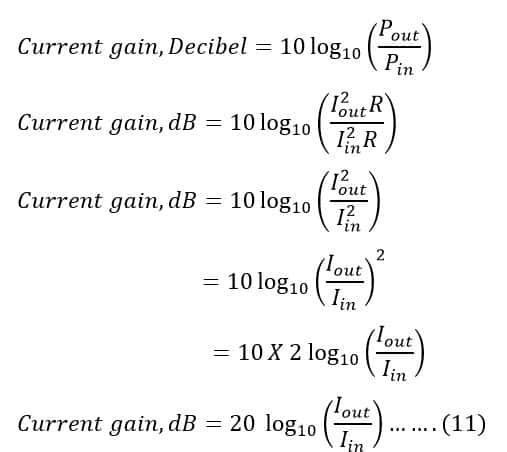
We can also express the current gain in dB as;

The gain/loss in decibels is given in the below table.
| Loss/Gain as a ratio( Iout/ Iin) | Loss/gain in decibels= 20 log(Iout/Iin) |
| 10000 | 80 dB |
| 1000 | 60 dB |
| 100 | 40 dB |
| 10 | 20 dB |
| 1 | 0 dB ( No loss/No Gain) |
| 0.1 | -20 dB |
| 0.01 | -40 dB |